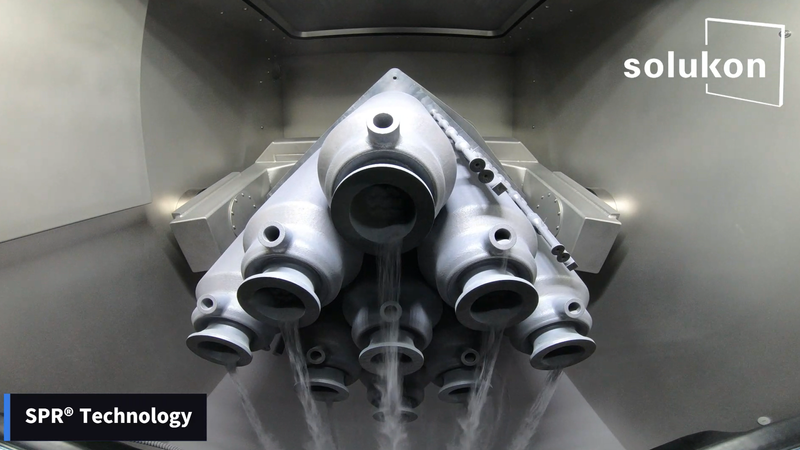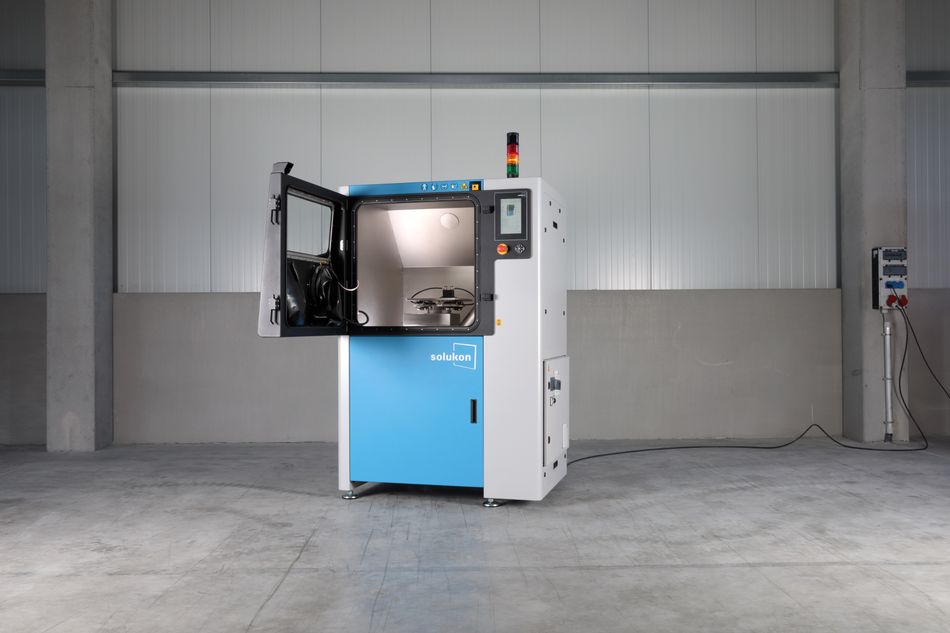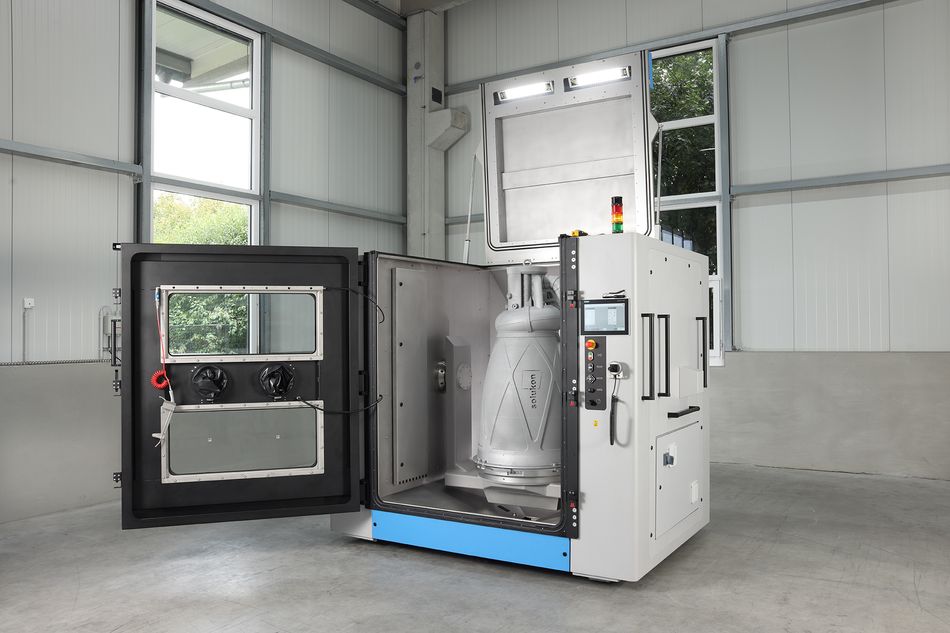How Automated Depowdering Is Shaking Up Powder Bed Fusion
Comprehensive, repeatable, and scalable depowdering is the secret to L-PBF manufacturing efficiency
Across industries such as aerospace and energy, laser powder bed fusion (L-PBF) remains the frontrunner of metal additive manufacturing technologies, offering the ability to print high-strength parts with complex internal geometries, cavities, and conformal cooling channels. Manufacturers are now finding ways to integrate L-PBF systems into production lines, making the technology widespread.
However, despite advancements in production-level additive manufacturing, bottlenecks remain that can limit the efficiency of the technology. Although newer systems can facilitate higher throughputs and yields, production cycles can be lengthened by challenging post-processing operations such as support removal and machining.
An underappreciated stage in the post-processing chain is depowdering, which typically requires lengthy manual depowdering of the finished part to ensure it is clean and free of unsintered powder. This article looks at how L-PBF users can use automated depowdering solutions to vastly shorten production cycles while producing superior and more consistent cleaning results.
The Importance of Depowdering
During the L-PBF process, a high-power laser melts and fuses particles of metal powder to form a sequence of dense layers. The process—sometimes called Selective Laser Melting (SLM) or Direct Metal Laser Sintering (DMLS)—is compatible with a wide range of alloys and offers several advantages over other metal manufacturing techniques such as machining and forging. For example, L-PBF can easily produce parts with complex internal geometries, undercuts, and other challenging features.
After construction of the part, excess unsintered powder must be removed from the printing chamber and from the part itself. Depowdering and cleaning typically takes place immediately after printing and before other post-processing steps such as heat treatment, removal of the build plate with a bandsaw, support removal, surface finishing, and post-machining.[1]
Depowdering approaches can vary. The most basic method is manual brushing or blowing within a glovebox, though this presents the greatest level of occupational hazard and the least efficiency. Other techniques—explained in later sections of this article—include mechanical excitation of the part via movements like rotation and vibration.
Reasons for depowdering after L-PBF include:
Maintaining the functionality of parts by ensuring cavities are free from powder blockages
Ensuring parts are clean and therefore ready for subsequent post-processing operations such as surface finishing
Collecting and recycling unsintered powder*
*Manual depowdering methods present a strong risk of powder contamination and are therefore unsuitable for this task
Why Depowdering Starts During Part Design
While depowdering is a post-processing operation, depowdering considerations should be implemented as soon as the L-PBF part is conceived. This is because certain geometries and features are amenable to depowdering, while others present significant challenges. Some geometries by their nature do not allow for total powder evacuation.
This can be an obstacle for engineers and product designers, because the ideal design for facilitating depowdering may not be the ideal design for part functionality. Nonetheless, depowdering considerations must be considered an important element of Design for Additive Manufacturing (DfAM).
Depowdering considerations to be implemented during design may include:
Using dedicated depowdering holes
Using through holes over blind holes where possible
Orienting holes horizontally
Adding radii to internal corners
Minimizing delicate features that could be damaged by vibrations
On the whole, better depowdering systems require fewer design compromises: a highly effective depowdering workflow can usually clear powder particles from radiused or sharp internal corners, will limit the intensity of its vibratory motion according to the fragility of the part, et cetera. Alternatively, features like depowdering holes can be closed up during post-processing via a process such as laser beam welding.[2]
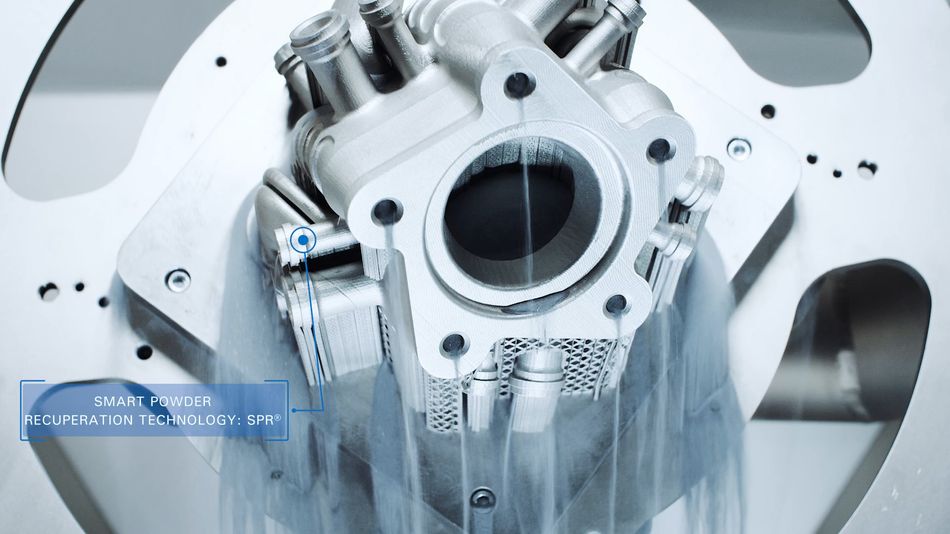
The Benefits of Automated Depowdering
The majority of L-PBF operators perform depowdering manually. This may involve depowdering within the build chamber of the production system or within a separate glovebox, typically with direct contact or blowing of compressed air. While manual depowdering may have been acceptable during the early days of L-PBF (when the technology was reserved for occasional prototyping), it is too slow for series production and comes with other significant downsides such as operator health risks.
A better alternative is automated depowdering, in which a computer-controlled machine manipulates the finished workpiece and subjects it to motion in order to remove powder from even the deepest recesses of the part. The many advantages of automated depowdering can broadly be classified into two categories: benefits to part quality and general benefits to the manufacturer or business.
Part Benefits | Operator Benefits |
Provides the most comprehensive powder removal from deep and complex channels by vibrating, knocking, and rotating the parts in addition to directing compressed air at them. | Performs depowdering in a much shorter time frame, reducing overall production cycle times and increasing profitability while also allowing human operators to focus on other tasks. |
Provides precisely controlled cleaning programs for parts based on their size and geometry, preventing damage to fragile parts. | Some systems can be incorporated into automated production lines, further increasing production speed and profitability. |
Depowdering cycles can be programmed, saved, and repeated across an entire batch of parts, creating a fully reproducible cleaning process. | Eliminates safety risks incurred by manual depowdering such as the risk of inhaling ultrafine metallic particles and the risk of explosion. |
Larger systems such as the Solukon SFM-AT1500-S can manoeuvre very large and heavy parts that would be impossible to manually clean. | Prevents contamination of metal powders, allowing for powder recovery and recycling that reduces total material costs. |
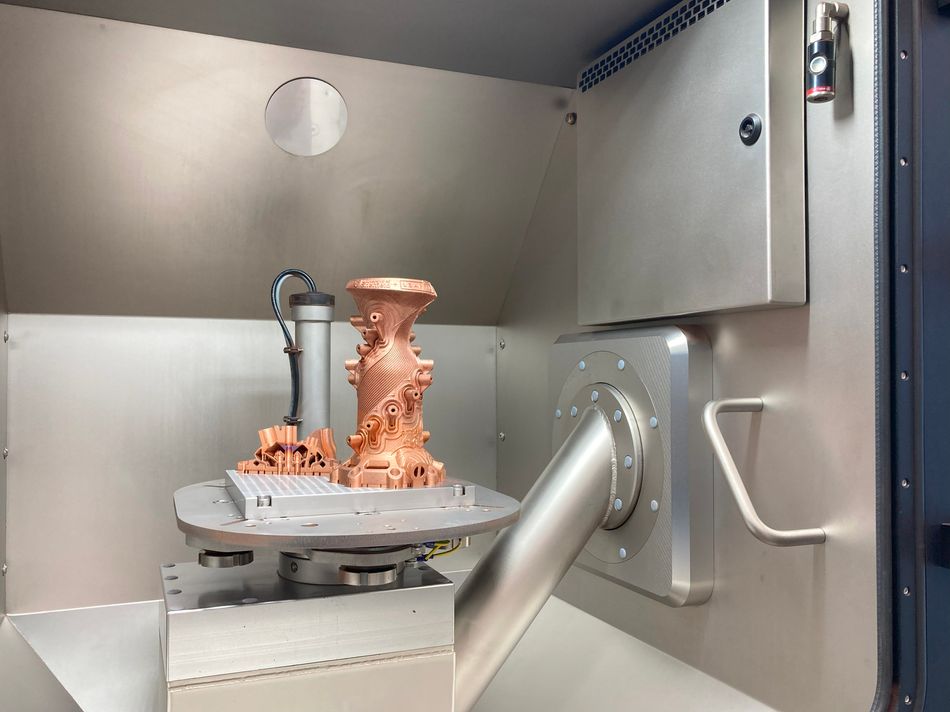
Solukon’s Depowdering Solutions
The industry leader in automated depowdering solutions is Solukon Maschinenbau GmbH, based in Augsburg, Germany. A partner of several leading L-PBF printer manufacturers, Solukon has been a pioneer in this area, launching the world’s first automated depowdering system ever in 2015 and now offering a broad range of hardware and software solutions for both L-PBF and Selective Laser Sintering (polymer powders).
Hardware
As of 2025, Solukon’s range of metal additive manufacturing depowdering stations spans five products in the SFM-AT line, each offering a different option in terms of size and capabilities. These machines are complemented by the SFM-PCU powder collection unit.
Solukon’s depowdering stations provide features not offered by other companies. These include process monitoring and automation integration, fully repeatable cleaning results, and variable excitation forms including vibration, knocking, rotation, and ultrasonic excitation. Designed as an alternative to standard pneumatic excitation, ultrasonic excitation uses an ultra-high frequency range and electronic control, enabling safe and thorough depowdering of delicate parts with fine structures or internal channels.
All depowdering stations in the SFM-AT line are engineered and built in Germany using patented Solukon technology, and all are compatible with all L-PBF printers. They are as safe as they are efficient: a hermetically sealed chamber keeps powder contained, while a controlled infusion of inert argon or nitrogen gas prevents any risk of explosion for reactive materials.
Software
Some of the biggest advantages of Solukon’s depowdering offering comes from its innovative depowdering software, SPR-Pathfinder®, compatible with models in the SFM-AT line** and working as on-premises software on Windows devices. This application offers powerful features, such as:
Calculation of ideal motion sequences directly from a CAD file, saving programming time and ensuring thorough powder removal (a feature developed in collaboration with Siemens). This calculation can be made for a whole build job simultaneously, even if there are parts of different size or shape mounted on one build plate.
Depowdering simulation during the design phase to validate geometries for depowdering. This innovative feature can provide significant cost savings by disqualifying designs that cannot be cleaned before they are erroneously printed, not after, and thereby preventing material waste.
Guaranteed cleaning consistency across large batches of identical parts, as each build job is subjected to the same cleaning program derived from the CAD file of the part.
**Pathfinder works with all SFM-AT800-S and SFM-AT1000-S systems starting with serial number 1
Solukon In Action
Solukon’s automated depowdering solutions are ideal for high-stakes industries like aerospace, where depowdering is required to clear out intricate internal structures within safety-critical parts. One notable beneficiary of Solukon’s products in this field is Italian aerospace company Sophia High Tech, which has deployed the mid-size SFM-AT350 with a high-frequency knocker for the depowdering of a Thrust Combustion Chamber.
The combustion chamber, made from Inconel 718, features 500 mm of complex internal channels with rectangular sections—an impressive demonstration of the possibilities of additive manufacturing, but a nightmare for manual depowdering. However, the task was well within the capabilities of the SFM-AT350. Sophia High Tech used SPR-Pathfinder®, taking data from the combustion chamber’s CAD file to create an automated cleaning program. Systematic vibrations facilitated the flow of powder from the intricate channels and other areas, resulting in a fully clean part within just 40 minutes.
The successful depowdering of Sophia High Tech’s thrust combustion chamber demonstrates the suitability of Solukon’s depowdering solutions in demanding industries like aerospace. Other industries suited to these solutions include energy, medical, automotive, and manufacturing, all of which have stringent requirements in terms of part cleanliness and function.
Conclusion
In addition to its pioneering hardware and software products, Solukon’s human expertise makes it a trusted partner for L-PBF operators. In addition to providing customer training and depowdering testing, the company can provide customer-specific machine configurations that are long-lasting and easy to maintain.
Contact Solukon to see how automated depowdering can benefit your L-PBF operations.
Resources
[1] Horstkotte R, Heinrich F, Prümmer M, Arntz K, Bergs T. Development of handling system concepts for additive process chains with Laser Powder Bed Fusion (L-PBF). Procedia CIRP. 2021 Jan 1;104:1173-8.
[2] Gutmann B, Köckinger M, Glotz G, Ciaglia T, Slama E, Zadravec M, Pfanner S, Maier MC, Gruber-Wölfler H, Kappe CO. Design and 3D printing of a stainless steel reactor for continuous difluoromethylations using fluoroform. Reaction Chemistry & Engineering. 2017;2(6):919-27.

